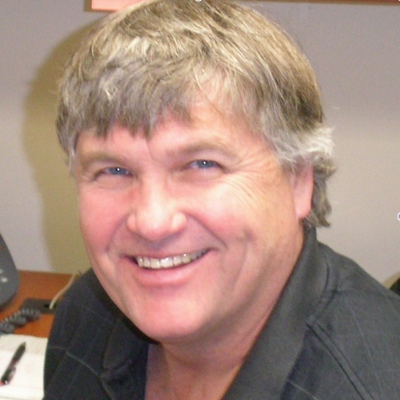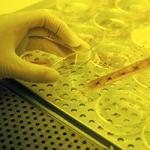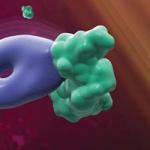
Research Topics
Our laboratory has invested the last three decades deciphering NO chemistry and its impact in numerous biological settings including wound response, heart disease, Alzheimer’s disease, and cancer. Our studies have demonstrated that in cancer, NO at levels produced by the inducible NO synthase isoform (iNOS or NOS2), which can be induced in tumors by cytokines during immune response(s), mediates numerous prosurvival and pro-metastatic processes associated with the disease progression of aggressive breast and other cancers. More recently, through collaborations with numerous national and international laboratories and clinicians we have developed multiplex imaging platforms for the spatial analysis of the tumor immune microenvironment, where we have found that elevated, spatially distinct tumor NOS2 and COX2 are associated with abated B cell activation (NOS2-driven) and CD8+ T cell tumor infiltration (COX2-driven), respectively, during the development of immune desert phenotypes. This extends our previous work showing that when co-expressed within the tumor, the predictive value of NOS2 and COX2 is dramatically augmented, where their feed-forward co-expression collaborates to drive the disease progression of aggressive estrogen receptor negative (ER-) and triple negative breast cancer (TNBC) phenotypes associated with a 21-fold increased risk of death. Recent important observations regarding NOS2/COX2- driven mechanisms in cancer progression include spatial analysis of multiplexed tumor images showing tumor NOS2 and COX2 expression associated with the modulation of stemness phenotypes in or near tumor hypoxic regions. This configuration has been validated in an in vitro model of hypoxia gradients, providing an additional method of drug screening. Toward this end, these metastatic and stemness niches can be spatially identified using Spatial Uniform Manifold Approximation and Projection neighborhood analysis software, and targeted using clinically available NOS2/COX2 inhibitors where we have shown increased cure rate and survival of mice with aggressive 4T1 triple negative breast tumors. Importantly, recent and current clinical trial studies have shown that when combined with taxane, targeting tumor NOS2/COX2 enzymes increases complete pathological responses of patients with grade IV breast cancer who had otherwise exhausted all treatment options. Currently, we are part of a UO1 grant clinically exploring targeted inhibition of the NOS2 enzyme.
Key Findings
• NO Chemistry and nitrosation promotes breast cancer disease progression
• NO Concentration-dependent pro-tumor and pro-metastatic signaling
• NOS inhibition abates IL-10 upregulation and immune suppression following tumor irradiation
• NOS2/COX2 Predictive value in tumor cohorts including aggressive breast, liver, and lung cancers
• Spatial regulation of immune response
Biography
Dr. David A. Wink received his Ph.D. in chemistry at the University of California, Santa Barbara. Following a postdoctoral fellowship in biochemistry as a National Research Service Award recipient at the Massachusetts Institute of Technology, he joined the Laboratory of Comparative Carcinogenesis at the NCI Frederick Cancer Research and Development Center (FCRDC) as a staff fellow. He then joined the Radiation Biology Branch at the NCI in 1995, where he received tenure in November 1999. He chaired the Gordon Conference on Nitric Oxide in Barga, Italy in 2009. In 2008 he was nominated as a Fellow of the American Association for the Advancement in Science in Chemistry.
Selected Publications
- Miranda KM, Wink DA. Persulfides and the cellular thiol landscape. Proc Natl Acad Sci U S A. 2014;111(21):7505-6.
- Heinecke JL, Ridnour LA, Cheng RY, Switzer CH, Lizardo MM, Khanna C, Glynn SA, Hussain SP, Young HA, Ambs S, Wink DA. Tumor microenvironment-based feed-forward regulation of NOS2 in breast cancer progression. Proc Natl Acad Sci U S A. 2014;111(17):6323-8.
- Soto-Pantoja DR, Ridnour LA, Wink DA, Roberts DD. Blockade of CD47 increases survival of mice exposed to lethal total body irradiation. Sci Rep. 2013;3:1038.
- Heinrich TA, da Silva RS, Miranda KM, Switzer CH, Wink DA, Fukuto JM. Biological nitric oxide signalling: chemistry and terminology. Br J Pharmacol. 2013;169(7):1417-29.
- Basudhar D, Bharadwaj G, Cheng RY, Jain S, Shi S, Heinecke JL, Holland RJ, Ridnour LA, Caceres VM, Spadari-Bratfisch RC, Paolocci N, Velázquez-Martínez CA, Wink DA, Miranda KM. Synthesis and chemical and biological comparison of nitroxyl- and nitric oxide-releasing diazeniumdiolate-based aspirin derivatives. J Med Chem. 2013;56(20):7804-20.
Related Scientific Focus Areas




Molecular Biology and Biochemistry
View additional Principal Investigators in Molecular Biology and Biochemistry

This page was last updated on Monday, February 24, 2025